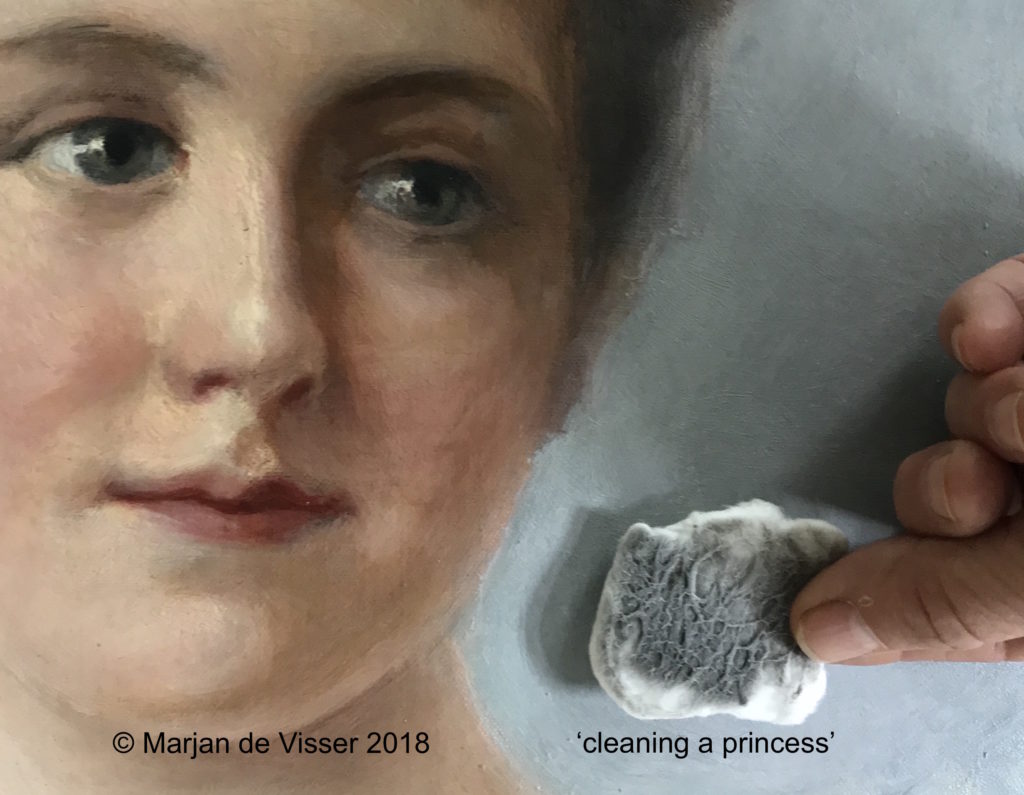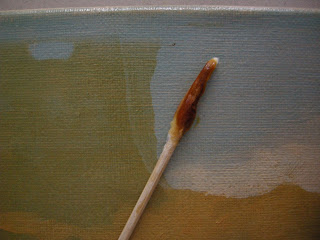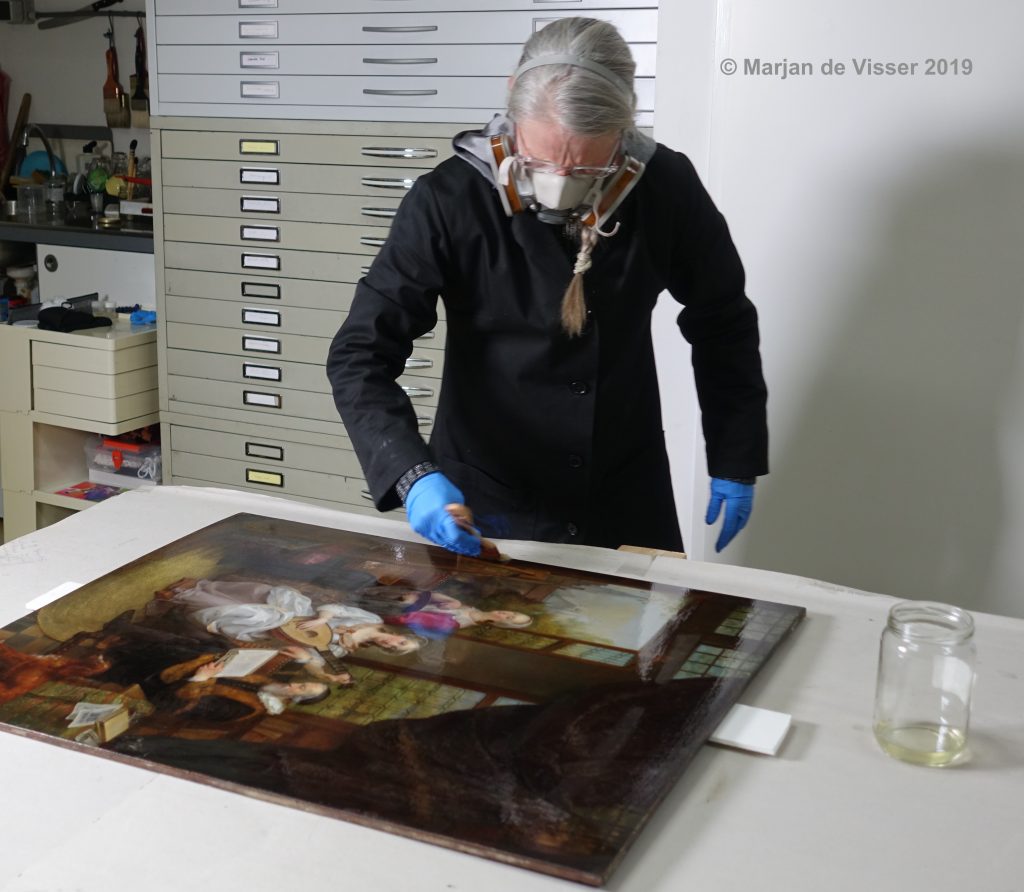restoration and conservation
conservation of a painting

the intake of a painting
In the Marjan de Visser restoration studio, every conservation of a painting begins with a personal conversation with the owner. Of course the owner has a lot to say about his painting. That is why this personal conversation is so important. The conservator then explains what she sees in the painting. But also what she hears and smells. This is how a covered painting sounds hard and hollow. And a smoked painting smells of nicotine. A small test may follow after this conversation. This is to demonstrate the dirt or the varnish. Naturally, Marjan de Visser takes all the time for this conversation. Usually with a cup of tea or coffee!
plan of action
Then when the customer decides to restore his painting… the collection form follows. The painting ends up in the chest of drawers. The treatment plan is the first step. Photography from the front and back. Daylight and UV fluorescence. Infrared if necessary. Usually the conservator also takes digital microscope photos. Then the tests are carried out.
The conservator studies the painting on the front and back in daylight and UV fluorescence. And preferably also under the microscope. In doing so, the conservator certainly also examines the construction and the support. What is the painting painted on? Is this on a linen or on a panel. Possibly even on a different material. what paint did the painter use. Was this oil paint, acrylic paint or perhaps casein. Quite often a painting is provided with a layer of varnish. Of course, the restoration history is important. Because often a painting has been treated before. For example, sufficient information has been collected to draw up a treatment plan.
the conservator photographs the painting
In daylight, grazing light, UV light and with (digital) microscopy.
cleaning tests and varnish removal tests
when restoring a painting, consider:
- The dust on the back of the linen that will be removed. But also apply protection to the back to prevent damage and pollution.
- Painting restoration also includes cleaning of both varnished and unvarnished paint layers. Think of dust, splashes, nicotine deposits, insect secretion.
- During the restoration of paintings, the aged and yellowed layer of varnish is often removed.
- Common damage is the peeling of the paint layer. If the paint plaques threaten to come loose, it is switched to bonding. Both natural and synthetic adhesives are an option.
- When restoring paintings, think of the gaps in the paint layer. A filler on structure makes it complete again. The retouch is the finishing touch. The filler is homemade specifically for each painting.
- Restoring paintings also includes repairing tears in the linen. This can be done by stabilizing the crack with ‘der Trecker’. Another option is to weld the wires with the hot needle. Sometimes it is also possible to suture the tear with a surgical needle and thread .
- When restoring paintings, bedding is sometimes the right choice to save the artwork. An option is to cover the painting with cold doubling technique under low vacuum. A doubled cloth has been pre-treated with a glue – Mistlining . During the process, the adhesive was reactivated with a solvent and the adhesion between both cloths is established.
- When restoring paintings, the last action is often varnishing. When applying varnishes, the conservator chooses from a large amount of (self-made) stable synthetic varnishes with the addition of UV filter.
Follow me on social media
Last posts

Interview for Blijtijds
For the magazine Blijtijds, I was interviewed by freelance journalist Marjolein de Jong for the 2024 autumn edition with the theme ‘art in search of a restorer’. The article is called ‘Blijmaker’ and with the title ‘the painting is a door to

Arthur Brand saves Spring Garden
Arthur Brand saves Spring Garden from the underworld! It is thanks to the investigation of the Central Netherlands Regional Unit and Arthur Brand that The Spring Garden, painted by Vincent van Gogh in 1884, is back in the Groninger Museum. Behind the

Vincent van Gogh Spring Garden
Since January 2024, I have been researching the painting Spring Garden by Vincent van Gogh. In Dutch ‘Lentetuin’ and Vincent painted it in 1884. It lies in front of me on a table in the depot of the Boijmans van Beuningen museum. Because I have a microscope available there with which I can zoom in to look in detail and take pictures. Continue reading →

CROMA atelier for painting conservation
In this post I give a platform to Zoë Sallin, an intern in 2022 in the restoration studio. She started her own studio in France in 2023 under the name CROMA CROMA, acronym of Conservation Restoration of Old and Modern








